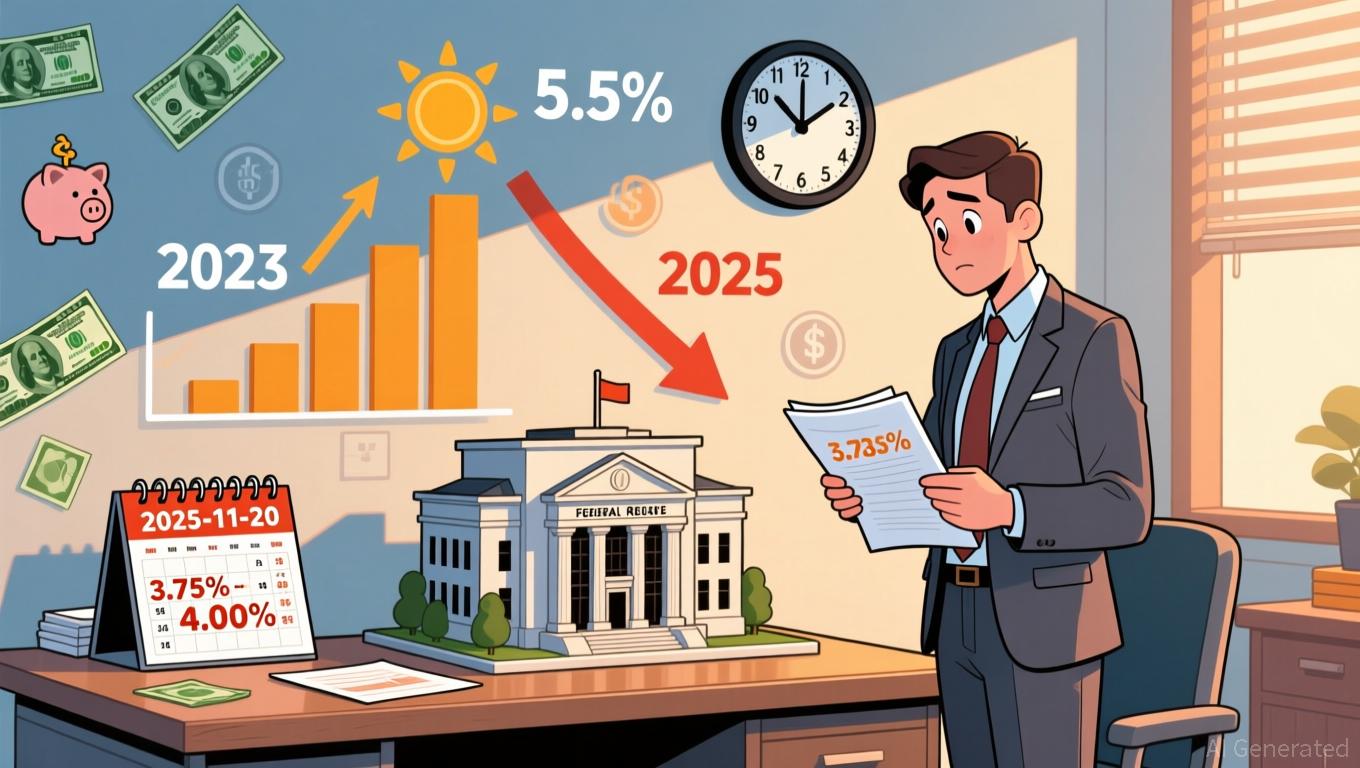UAE Establishes International Benchmark for Crypto: Striking a Balance Between Progress and Oversight
- UAE enacts landmark crypto law (Federal Decree No. 6/2025) to regulate DeFi, Web3 protocols, stablecoins, DEXs, and blockchain bridges under central bank oversight. - Entities offering crypto financial services must obtain licenses by September 2026, enforcing AML compliance and systemic risk mitigation through reserve audits and security standards. - Framework balances innovation with stability, supporting UAE's economic diversification goals while attracting institutional investors through regulatory c
The United Arab Emirates has taken a significant step in the international crypto sector by introducing
The law’s coverage is broad, including decentralized finance protocols, tokenized networks, and tools that enable cross-chain asset movement. By placing these activities under centralized regulation, the UAE seeks to boost transparency, strengthen anti-money laundering (AML) measures, and shield users from systemic threats—especially in areas like stablecoins, where liquidity issues could have widespread financial consequences
The UAE’s regulatory strategy aims to strike a balance between encouraging technological advancement and maintaining financial stability. By creating a transparent licensing process, the country positions itself as a welcoming environment for crypto businesses, while also reducing the unpredictability often associated with decentralized technologies
Importantly, the law gives organizations until September 2026 to meet the new requirements, allowing time for adjustment. However, failing to comply could result in hefty fines—up to one billion dirhams—and possible criminal prosecution
By expanding its regulatory framework to include DeFi and Web3, the UAE has established a new standard for global crypto oversight. This move highlights the nation’s dedication to building a robust digital finance sector that safeguards users while embracing the innovative potential of blockchain. As other countries consider how to govern decentralized technologies, the UAE’s approach provides a model for merging innovation with structured regulation.
Disclaimer: The content of this article solely reflects the author's opinion and does not represent the platform in any capacity. This article is not intended to serve as a reference for making investment decisions.
You may also like
Post-peak CD returns threatened by Fed reductions—investors hurry to lock in rates
- CD rates peaked at 4.20% APY in late 2025 but declined as Fed rate cuts reduced federal funds to 3.75%-4.00%. - Short-term 12-month CDs remain competitive at 3.92% APY, outperforming longer-term products amid expected further Fed cuts. - Analysts urge investors to lock in current rates before December's anticipated third cut, as 2025's three reductions follow 2024's three cuts. - Strategic allocation to high-APY CDs maximizes returns, with $100k in 12-month terms generating $3920 vs. $3600 in 24-month te

Bitcoin News Update: Federal Reserve's Shift to Dovish Stance Sparks Digital Asset Rally Amid Supply Constraints, BTCM's Second Phase Poised to Capitalize
- Fed ends quantitative tightening, boosting markets as Bitcoin Munari (BTCM) enters $0.22 Phase 2 presale. - Dovish pivot with inflation below 2% drives risk-on sentiment, pushing December rate cut odds above 70%. - BTCM's fixed-supply model (21M tokens) and 2,627% projected return align with scarcity-driven crypto trends. - Structured presale pricing ($0.10→$0.22) and Solana's $58M daily ETF inflows highlight institutional adoption.

Bitcoin News Update: Report Reveals Bitcoin’s Future Depends on Macroeconomic Transparency and Trust from Institutions
- Bitcoin's 36% October drop sparks debate over recovery potential amid institutional sell-offs and ETF divestment risks. - Institutional holders (1,000+ BTC) reduced exposure by 1.5%, contrasting retail exits, mirroring 2019-2020 redistribution patterns. - Key support at $89,400-$82,400 and Fed rate cut odds (69.3%) highlight macroeconomic influence on Bitcoin's risk-on/risk-off dynamics. - Whale accumulation (100-10,000 BTC) contrasts retail selling, but 1,000-10,000 BTC cohort distribution remains a bea

The Growing Interest in Socially Responsible Investing (SRI) within Legal and Public Interest Fields
- SRI is shifting toward education and legal sectors to address systemic inequities, merging financial returns with social impact. - UC Berkeley's Public Interest Scholars Program funds law students for public service, ensuring measurable societal benefits through accountability frameworks. - Digital tools and ETFs like ESGU/VFTAX enhance SRI transparency, enabling investors to track real-time social impact in education and legal equity initiatives. - Institutional commitments to IDEAA principles and partn
